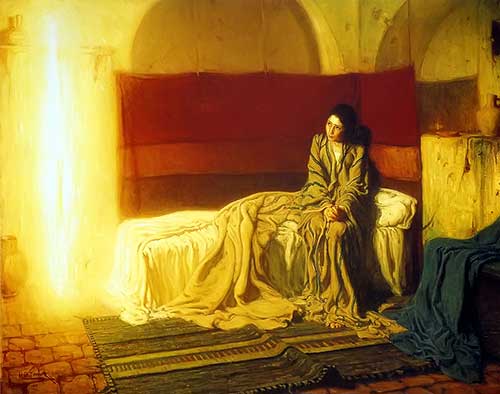
Today, 25 March, the Solemnity of the Annunciation, Pope Francis will carry out a solemn Act of Consecration of humanity, and Russia and Ukraine in particular, to the Immaculate Heart of Mary. Pope Francis wrote to all his bishops, asking them to “join in this Act by inviting the priests, religious and faithful to assemble in their churches and places of prayer on 25 March, so that God’s Holy People may raise a heartfelt and choral plea to Mary our Mother. I am sending you the text of the prayer of consecration, so that all of us can recite it throughout that day, in fraternal union.”
The request to Consecrate Russia to the Immaculate Heart of the Blessed Virgin Mary is part of the message of the Fatima apparitions. Whether this has been previously carried out is disputed amongst Catholics as ‘no ceremonial rite of Papal consecration has been specifically addressed to “Russia” per verbatim nor in complete unison with the sum total of all Catholic bishops.’
*****
In our Christchurch Diocese, our Bishop has joined church leaders in calling for prayer for Peace in Ukraine on this day.
One suggestion I have is that, especially today at noon, people of all faiths and none use this ‘Universal Prayer for Peace’:
Lead me from death to life,
Commentary here
from falsehood to truth;
lead me from despair to hope,
from fear to trust;
lead me from hate to love,
from war to peace.
Let peace fill our heart,
our world, our universe.
*****
We can waste time and energy, and generate more heat than light, about the Annunciation story – How much of it is history? Is it an extended metaphorical story? Where did Jesus’ other chromosomes come from?… And we miss the point of the story: God became what we are so that you and I might become what God is.
The incarnation reveals who God is. It reveals who we are. It complements what is meant by being made in God’s image: like a signet ring in wax, we are God’s image and our union can be complete. As we dig the wells of ourselves, with Jesus, there is no point where I stop and God starts.
From a historical perspective, we tend to take for granted that the date for Christmas was established and then we counted backwards – Jesus the perfect baby was perfectly 9 months in his mother’s womb. But actually, historically it may have been the other way around, with an ancient understanding that great events all occurred on the same date: creation, Abraham’s sacrifice of Issac, the incarnation, the crucifixion… In the West the calculation of the crucifixion came up with 25 March; in the East 6 April. So that’s the date of the incarnation. Calculate 9 perfect months forward and you have a birth in the West 25 December, and in the East 6 January.
This theory was first proposed by Louis Duchesne, Origines du culte Chrétien, 5th ed. (Paris: Thorin et Fontemoing, 1925), pp. 275–279; and developed by Thomas Talley, Origins of the Liturgical Year, 2nd ed. (Collegeville, MN: Liturgical Press, 1991).
Tertullian of Carthage notes that Jesus was conceived and crucified on the same day. St Augustine in On the Trinity (Sermon 202) also says: “[Jesus] is believed to have been conceived on the 25th of March, upon which day also he suffered; so the womb of the Virgin, in which he was conceived, where no one of mortals was begotten, corresponds to the new grave in which he was buried, wherein was never man laid, neither before him nor since. But he was born, according to tradition, upon December the 25th.”
The West would have started from the Hebrew 14 Nisan. The East from 14 Artemisios in the Greek calendar.
We do not know which theory of this day’s origin is correct: 9 perfect months before the solstice, or connecting incarnation and crucifixion. Both are worth our reflection on this day when we remind ourselves that God became what we are so that you and I might become what God is.
Pour your grace into our hearts, O Lord,
that we who have known the incarnation of your Son Jesus Christ,
announced by an angel to the Virgin Mary,
may by his cross and passion be brought to the glory of his resurrection;
who lives and reigns with you,
in the unity of the Holy Spirit,
one God, now and for ever Amen.
If you appreciated this post, consider liking the liturgy facebook page, using the RSS feed, and/or signing up for a not-very-often email; there is also an Instagram @liturgy.…


